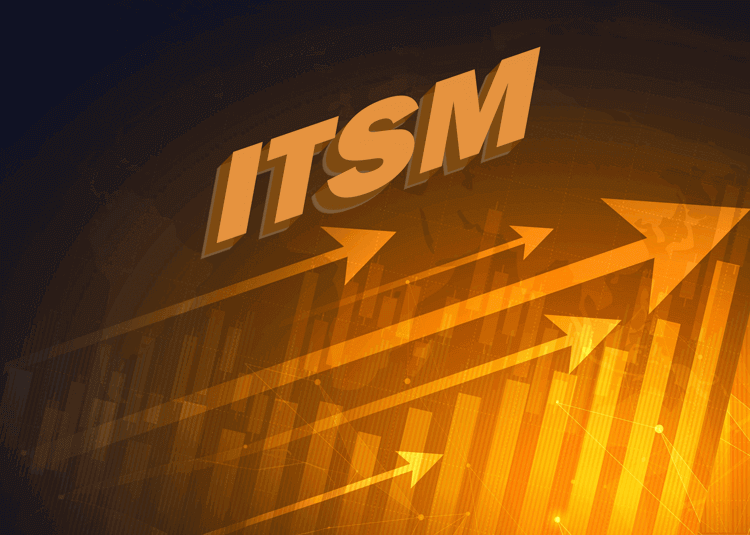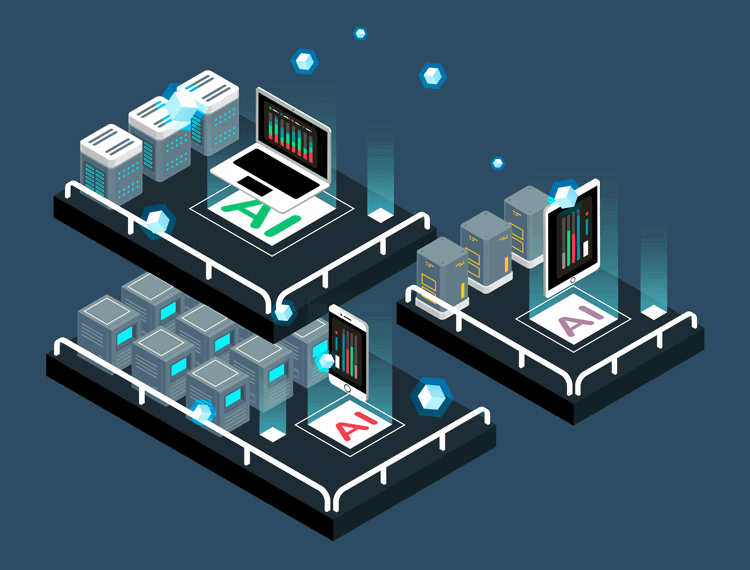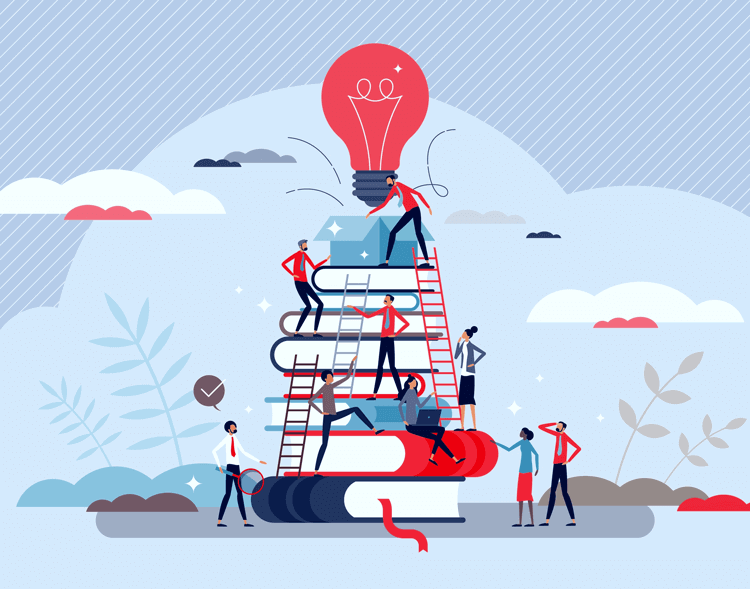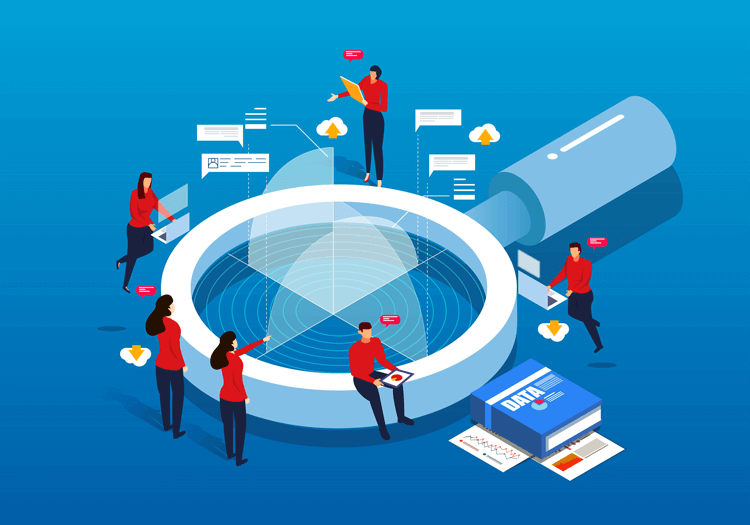10 ITSM Trends for 2025: Changes to Streamline Your IT Service Management
For 2025, IT Service Management (ITSM) is set to evolve significantly with technology-driven advancements.
We have already seen that Artificial Intelligence (AI) — such as ChatGPT — and similar tools have made an impact this year, and we expect that trend to continue in 2025.

CIOs and IT leaders will need to adapt to these trends to remain competitive and efficient in their IT operations. These changes could impact in-house ITSM teams and service desks, as much as outsourced ITSM vendors and providers.
These are the macro-trends we are expecting to impact and shape ITSM in 2025:
- AI and Automation in ITSM
- Experience-Driven ITSM Changes
- Data-Driven Enhancements
- Hardware Environments
- Software Environments
- ITSM Security Changes
10 ITSM Trends for 2025
Here's a more in-depth look at the top 10 ITSM trends expected to change, or start changing the sector in 2025:
AI and Automation in ITSM
-
AI Agent Automation
AI agent automation is poised to take over routine IT support tasks, such as password resets, troubleshooting, and system updates, reducing reliance on human intervention for repetitive support.
AI models and the apps and software that are built on them are becoming more advanced. Instead of prompt-based outputs, we can start to expect AI agents to perform tasks for us.
With advancements in Natural Language Processing (NLP), AI agents will be able to understand complex queries, improving response times and reducing human error.
ITSM Benefits
- Increased Efficiency: By automating repetitive tasks (particularly Tier 1/Level 1 support), AI agents free up IT staff for higher-value tasks. This also means ITSM teams struggling to manage a budget could reduce headcount and, therefore, operational costs.
- Cost Reduction: Fewer manual interventions reduce costs associated with IT service desk staffing, particularly Tier 1/Level 1 support. For example, an AI "Agent" could try to find a solution to a service request before the human Agent even sees the request. This removes that one step of the manual process an Agent would normally need to perform.
- 24/7 Support: AI agents enable around-the-clock service, improving customer satisfaction. This would reduce demand on IT agents, enabling them to tackle more complex challenges that require direct human intervention.
How to Apply/Implement
To implement AI agent automation, CIOs should:
- Identify repetitive tasks suitable for automation, especially within Tier 0 (self-serve) and Tier 1 support.
- Choose AI solutions that integrate with existing ITSM platforms.
- Monitor AI performance to ensure accuracy and continually adjust algorithms for improvement.
-
Enhanced AI Governance
With increased reliance on AI, 2025 will see a greater need for AI governance frameworks to promote ethical and effective AI use within ITSM.
Enhanced AI governance will include compliance with data privacy laws, transparency in AI decisions, and bias mitigation. These changes will come top-down, and we can expect this to happen in Europe more than in the US.
ITSM Benefits
- Reduced Risk: Strong governance reduces risk related to data breaches and non-compliance. Unless AI has strong governance frameworks the world, and humanity, face untold dangers in the future.
- Trust and Transparency: Users can trust AI-driven decisions, knowing they follow ethical guidelines. This is essential for humanity to develop "true AI", which will be far in advance of the LLM-based models we currently have.
- Improved AI Accuracy: Governance processes reduce AI bias, leading to more reliable results. At present, generative AIs do come with an inherent human bias. Improved governance should reduce these issues.
How to Apply/Implement
To establish AI governance, IT leaders should:
- Develop AI ethics and compliance policies in line with industry standards.
- Regularly audit AI applications to keep adherence to governance policies.
- Implement a feedback loop to refine AI accuracy and transparency.
However, when it comes to AI governance, there's only so much that IT leaders can do. Governments and the way laws interact and shape AI development are the only realistic guardrails the IT sector can rely on for developing AI governance models.
Experience-Driven ITSM Changes
-
A Greater Customer Experience (CX) Focus for ITSM Teams
With AI playing a more prominent role in self-serve and Level I, there will be more of a reason to help human interactions be more customer-centric.
A focus on better Customer Experience (CX), even in IT, will become more important. This is especially for outsourced ITSM service providers, as companies buying these services will come to value the CX as much, if not more, than the technical skills of the team providing those services.
ITSM Benefits
- Better Selling Point: When humans want a human CX then it's the people doing that work that matter as much, or even more, than the work itself. The CX and results of surveys, such as NPS and CSAT scores, will be more of a selling point from now on.
- Higher-value Work: If AI and self-serve can take care of basic and repetitive tasks, then there's more value in the work human ITSM agents are delivering. This makes it more consultancy-centric work than simply troubleshooting.
- Better for Customers: This means that ITSM teams will have to focus on the customer experience, and those that don't will lose out to competitors.
How to Apply/Implement
- Review your team's most recent (last 12 months) NPS and CSAT scores.
- Determine where there's room for improvement.
- See what AIs can take over so you can deliver more high-value, customer-centric work.
Data-Driven Enhancements
-
AI Used to Update Self-Serve Resources
In many organizations this is already being done. AI plugins within self-serve portals and AI app stores, such as you can find within ChatGPT, are being used to update self-serve resources.
ITSM Benefits
- Faster Updates: The next time there is a problem that has affected 100s of 1000s of users, the changes to self-serve will be quickly reflected in the published resources. This should solve a significant problem of finding time to update them. An AI can do it for you, even if one of the team has to polish the changes after it has been published.
- Real-time Changes: You need not worry that there will be a surge of new Level 1 support requests when new software is rolled-out. The presumed problems and solutions will already be updated within your self-serve resources.
- Reduced Tier 1 Demand: A positive and welcome change this is, as too many ITSM teams are overwhelmed with support tickets. This would help to reduce the strain on over-worked agents.
How to Apply/Implement
- Find an AI-based plugin that can turn support tickets into self-serve resources
- Make sure this is plugged-in and works well with both your support ticket software and your self-serve resource platform
- Do a test run with a few different batches of support tickets. Once you are satisfied that it's working smoothly it can be rolled out for regular updates
Hardware Environments
-
Faster, Energy-efficient Computing
As demand for high-speed and energy-efficient computing increases, ITSM will see shifts in data processing and workload management.
Faster processors and energy-saving technologies will minimize service latency, directly impacting user experience.
Given the rise of AI-based tools, models, apps, and agents, computers simply must get faster and more energy efficient. Right now, AI (more so than the mining of cryptocurrencies) is using vast amounts of energy and electricity.
According to Goldman Sachs, by 2028, AI is expected to represent approximately 19% of data center power demand. And it is estimated that data centers will utilize 8% of US power by 2030, compared with 3% in 2022. So, the need for faster, more efficient computers, devices, and data centers are exactly what is needed to meet the growing implications of the AI revolution.
ITSM Benefits
- Enhanced User Satisfaction: Reduced latency provides a smoother, faster user experience.
- Environmental Sustainability: Energy-efficient computing and data centers support eco-friendly IT operations.
- Cost Savings: Lower energy consumption reduces operational costs.
How to Apply/Implement
To capitalize on faster, energy-efficient computing:
- Evaluate hardware upgrades that prioritize energy efficiency.
- Monitor energy consumption to optimize resource usage.
- Align energy-efficient goals with broader organizational sustainability initiatives.
-
Interlinking AI and Hardware in ITSM
The integration of AI directly into hardware will streamline ITSM processes by enabling more responsive, real-time monitoring and troubleshooting.
AI-powered hardware will be better equipped to detect and resolve hardware issues autonomously. We've already seen the impact of data monitoring in industry. The "Factory 2.0" and now 3.0 movement was about automating and pre-empting updates and essential fixes.
Now, we can expect AI-powered Internet of Things (IoT) interconnectivity, and this will be a game changer for ITSM. Especially when preventing hardware failures instead of waiting for something to break.
ITSM Benefits
- Proactive Issue Resolution: Faster identification of hardware issues, reducing downtime.
- Resource Optimization: AI-driven hardware can optimize its own performance based on usage patterns.
- Reduced Support Demand: By handling its own diagnostics, AI-powered hardware reduces dependency on support staff.
How to Apply/Implement
To implement AI-enabled hardware:
- Identify hardware solutions that integrate AI capabilities.
- Conduct a cost-benefit analysis to determine ROI for hardware upgrades.
- Train IT teams on managing and maintaining AI-enabled IoT hardware.
-
Robots Performing Human ITSM Roles
Robots are expected to take on some human roles in ITSM, handling tasks like data center maintenance and physical network diagnostics. Robot precision and efficiency could transform hands-on IT support.
There are already numerous startups, scaleups, and big tech companies developing human-like robots that could perform numerous manual tasks, including in ITSM and data centers. Could we see the first go into operational use in 2025?
ITSM Benefits
- Reduced Human Error: Robots provide precise, consistent service, reducing error rates.
- Improved Safety: Robots can handle hazardous tasks, ensuring human safety.
- Operational Continuity: Robots operate continuously, aiding 24/7 ITSM support.
How to Apply/Implement
To introduce robotics in ITSM:
- Start with a pilot program to evaluate robot efficacy in specific IT roles.
- Select tasks that are repetitive and physically demanding.
- Integrate robots with existing ITSM platforms for seamless operations.
Software Environments
Neurological Software Enhancements
Neurological software enhancements--like advanced AI algorithms inspired by human cognition--promise faster data processing and adaptive problem-solving, leading to smarter, intuitive ITSM tools.
Several tech startups and universities are working on this technology. In most cases, human trials have been a success.
Could we see this sort of technology become more normal over the next few years? It would bridge the gap between AI and humans, and could equally bridge the gap between thoughts and actions. Our thoughts would become our actions, implemented using technology.
ITSM Benefits
- Enhanced Decision-Making: Neurological AI can process complex data for more informed decisions.
- Adaptable Systems: Software that learns from user behavior, improving over time.
- Reduced IT Load: Intelligent software reduces the need for human intervention in data analysis.
How to Apply/Implement
To leverage neurological software:
- Incorporate cognitive AI capabilities into ITSM for complex issue resolution.
- Invest in continuous learning modules to enhance software intelligence.
- Train IT staff on monitoring and troubleshooting cognitive software functions.
ITSM Security Changes
-
Safeguarding Against Disinformation
With the rise of AI-powered disinformation (such as deepfakes and bots), ITSM systems may be targeted by deceptive information aimed at manipulating systems or disrupting workflows. Advanced safeguards will be crucial to identify and counter disinformation.
Not only that, but cyberattacks can become increasingly sophisticated if they can use social media to impersonate someone in a workplace.
Imagine getting a WhatsApp voicemail from your boss to pay an invoice you've received via email. You pay it, assuming nothing's wrong, as everything looks real and you've just heard your manager's voice say to make the payment. And yet, instead, you've just paid a scammer and it's very difficult to get that money back from the bank.
These are real scenarios that organizations are going to have to protect themselves against in 2025 and beyond.
ITSM Benefits
- System Integrity: Protects ITSM from the risks posed by disinformation.
- User Trust: Reliable IT systems reinforce user confidence.
- Reduced Disruption: Early detection of disinformation reduces potential operational impact.
How to Apply/Implement
To protect against disinformation:
- Implement AI-powered monitoring to detect unusual activity in real-time, including deepfake emails and messages.
- Educate teams on recognizing and mitigating the effects of disinformation.
- Develop response protocols to minimize the impact on ITSM operations.
-
Post-quantum Cryptography
With the rise of quantum computing (also called quantum-resistant cryptography), traditional encryption methods may become vulnerable. Post-quantum cryptography will play a pivotal role in securing ITSM data and protecting sensitive information in an era of heightened cybersecurity threats.
Protecting data is going to become increasingly difficult in an era of AI agents and cyberattacks using AIs to breach defenses. So, organizations are going to have to deploy increasingly sophisticated defenses, such as AI and quantum-resistant cryptography.
ITSM Benefits
- Data Protection: Post-quantum cryptography ensures secure data, mitigating risks of unauthorized access and cyberattacks.
- Future-Proofing: Organizations are prepared for quantum advancements that could compromise older encryption methods.
- Compliance: Aligns with regulations mandating robust data security measures. Increasingly sophisticated AI threats mean more secure methods of encryption.
How to Apply/Implement
For a smooth transition to post-quantum cryptography:
- Assess critical areas where sensitive data is handled.
- Implement post-quantum algorithms gradually to avoid disruption.
- Educate IT teams on quantum-safe practices to bolster security.
Key Takeaways: More AI, Automation, and Security Technology Trends for 2025 ITSM
In 2025, IT Service Management (ITSM) will continue to include changes driven by advancements in AI, automation, and enhanced security. Key trends include AI agent automation for routine tasks, strengthened AI governance, and a focus on customer experience. Data-driven self-serve resources, faster, energy-efficient hardware, and AI-integrated hardware will boost efficiency, while post-quantum cryptography and measures to safeguard against disinformation will enhance ITSM security. Robots and cognitive software will take on complex roles, shifting human teams toward more high-value, customer-centric tasks.
These emerging trends reflect the dynamic changes in technology and the evolving needs of IT Service Management. For IT and CIO leaders, staying informed on these trends and adapting accordingly will be key to leveraging their benefits in 2025.
Giva Can Help Your Organization Stay Ahead of the Trends
Giva's AI-powered help desk and ITSM software include knowledge management and a self-service portal, which can help you bring knowledge base and self-service to the organizations you support.
Other Giva features include:
- Harness the power of Giva's AI Copilot to effortlessly refine responses and quickly access and format solution information
- Knowledge Base Copilot summarizes search results so agents and customers alike do not necessarily need to view each knowledge article for the information they are looking for
- Automatically convert emails into tickets to streamline the ticketing process
- Customize Giva for any department or subsidiary organization and deliver real-time agent and team analytics to help improve performance
- Provide your customers with the safety and security of Giva HIPAA/HITECH Compliance, included in all editions at no additional cost and covered by Cyber Liability Insurance Policy
To learn more, book a free Giva demo to see our solutions in action, or start your own free, 30-day trial today!





